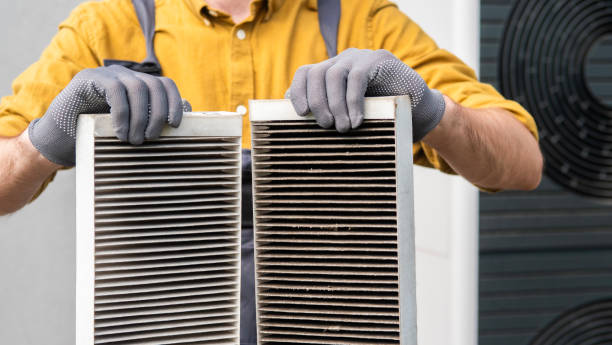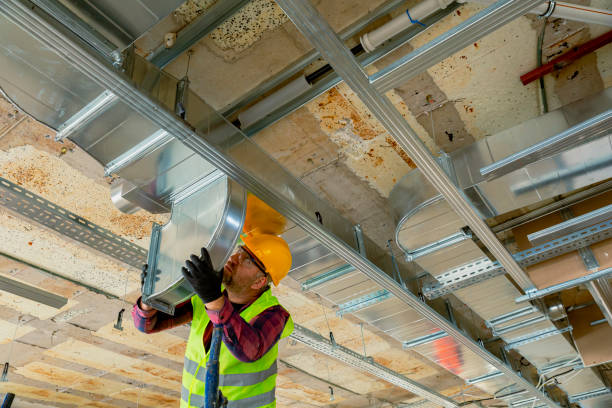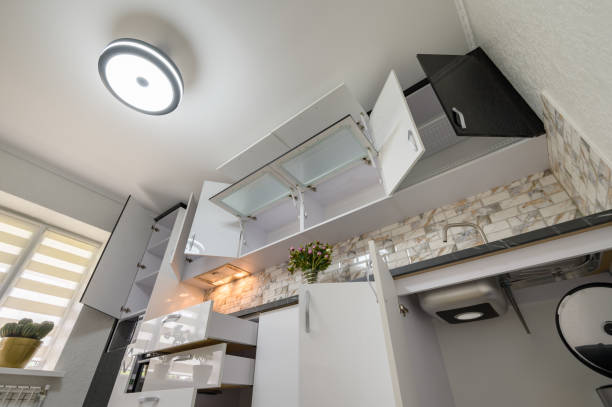When people think of air pollution, images of congested highways and towering smokestacks often come to mind. However, the air within our homes can be just as, if not more, polluted than outdoor air. Considering most people spend most of their time indoors, ensuring clean air at home is essential for health and well-being.
There are several sources of indoor air pollution, such as pet dander, dust, mould, and chemical fumes from cleaning products. This invisible threat can aggravate allergies, trigger respiratory issues, and compromise general health. Fortunately, you can significantly improve your home’s air quality with proactive steps.
Here are seven proven strategies to enhance your home’s air quality and achieve cleaner, fresher indoor air.
1. Upgrade and Maintain Your HVAC Filters
Your heating, ventilation, and air conditioning (HVAC) system tirelessly regulates your home’s temperature and filters out airborne pollutants. However, with time, these filters get clogged with debris, dust, and filth, reducing their efficiency and forcing your HVAC system to work harder.

Action Steps:
- Depending on usage and manufacturer recommendations, HVAC filters should be replaced every one to three months.
- Consider investing in high-efficiency particulate air (HEPA) filters to capture smaller particles like pet dander, pollen, and smoke.
2. Pay Attention to Other Household Filters
While HVAC filters are critical, they’re not the only ones needing attention. Other household appliances also have filters that help maintain indoor air quality. Neglecting these filters can cause pollutants to circulate back into your living space.
Action Steps:
- Clean or replace filters in vacuum cleaners, clothes dryers, and kitchen vents every few months.
- For vacuum cleaners, choose models with HEPA filtration to trap fine particles more effectively.
3. Schedule Regular Air Duct Cleaning
Air ducts distribute warm or cool air throughout your home. Over time, dust, mould, and other pollutants can accumulate within the ducts, allowing them to circulate back into your rooms.

Action Steps:
- Hire a professional to inspect and clean your air ducts every 2-3 years or more frequently if you’ve experienced water damage or mould issues.
- Ensure your ducts are sealed properly to prevent external pollutants from entering your system.
4. Use Your Kitchen’s Ventilation System While Cooking
Cooking releases pollutants like carbon monoxide and nitrogen dioxide, especially on gas stoves. Even electric stoves release small particles from food and oil that can pollute indoor air. Proper ventilation helps remove these contaminants from your kitchen.

Action Steps:
- Turn on the kitchen hood vent or exhaust fan while cooking.
- If you don’t have a kitchen vent, consider installing one or simply opening windows to allow cross-ventilation.
5. Clean Rugs, Carpets, and Upholstery Regularly
Rugs, carpets, and upholstery can be reservoirs for dust, dirt, and allergens. Even though they aid in capturing airborne particles, they need to be cleaned frequently to keep pollutants from building up.

Action Steps:
- Vacuum rugs, carpets, and upholstered furniture weekly using a vacuum cleaner with a HEPA filter.
- Opt for area rugs that can be washed or removed for cleaning.
- Use steam cleaning for deeper cleaning of carpets and upholstery, especially if you have pets or allergies.
6. Control Indoor Humidity Levels
High humidity levels can encourage mould and mildew growth, which releases spores into the air. Damp conditions can also increase dust mites, which thrive in moist environments. Controlling humidity reduces the risk of these pollutants.
Action Steps:
- Use dehumidifiers to maintain indoor humidity between 30-50%.
- Fix leaky pipes, windows, and roofs to prevent water from seeping into your home.
- Ventilate damp spaces, such as basements and bathrooms, by opening windows or utilising exhaust fans.
7. Introduce Air-Purifying Indoor Plants
Houseplants improve your home’s aesthetic appeal and contribute to air purification. Plants can absorb pollutants and convert carbon dioxide into oxygen, producing cleaner, fresher air.
Action Steps:
- Add air-purifying plants like peace lilies, spider plants, Boston ferns, and snake plants to your living space.
- Avoid overwatering plants to prevent mould growth in the soil.
Why Indoor Air Quality Matters
The quality of the air you breathe indoors profoundly impacts your health. Poor air quality can cause short-term issues like allergies, sneezing, and headaches, but long-term exposure to airborne pollutants can increase the risk of respiratory diseases and cardiovascular problems.
Proactive Measures to Take Today
Test your air quality: Purchase an air quality monitor to measure pollutants like particulate matter (PM2.5), carbon monoxide, and humidity.
Invest in an air purifier: An air purifier with a HEPA filter to catch tiny pollutants is a good option if allergies or respiratory problems are a concern.
Use natural cleaning products: Traditional cleaning products may contain volatile organic compounds (VOCs), which release harmful fumes. Opt for natural, fragrance-free cleaning products to avoid adding unnecessary pollutants to your air.
Conclusion
Enhancing indoor air quality is a continuous activity rather than a one-time event. Regular maintenance of HVAC systems, cleaning of household filters, and humidity control all contribute to a healthier living environment. By following these seven strategies, you’ll be well on your way to breathing cleaner, fresher air in your home. Whether changing filters, cleaning carpets, or adding a few houseplants, these actions create a safer, more comfortable space for you and your loved ones.

